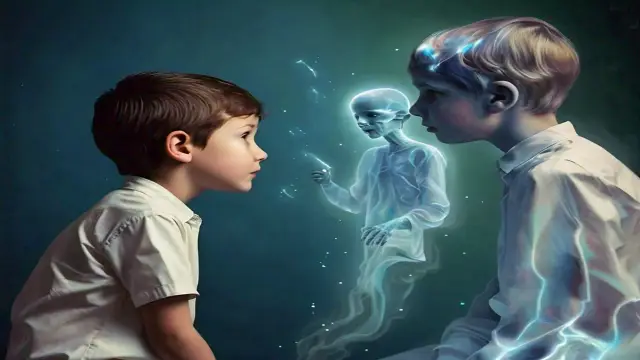The Mysterious Conversations of a Four-Year-Old: What’s Going On?
Children are truly fascinating beings. They learn quickly, play creatively, and see the world in ways that adults often forget. One moment they’re giggling at a cardboard box, and the next, they’re having deep conversations with imaginary friends. But what happens when those friends seem a little too real?
The Curious Case of Emma
A friend of mine has a four-year-old daughter named Emma. Her imagination is both charming and a bit unsettling. One day, her dad took her to a coffee shop. He left her in the car for just a few minutes. When he returned, he found Emma deep in conversation with someone invisible.
“Who are you talking to?” he asked.
“Derek,” she replied, as if it were the most normal thing in the world. Emma waved goodbye to Derek as they drove away.
Later, my friend learned that Derek had passed away just the night before, in the very parking lot where Emma had been talking to him. This left everyone puzzled. Was it just a coincidence, or was there something more to Emma’s story?
The Red People
Emma’s tales didn’t stop there. At her recent birthday party, she shared more about her imaginary friends. “My imaginary friends are all red,” she told her family. “They melted, and I’m sad.”
Intrigued, her dad decided to dig deeper into their home’s history. What he found was shocking: the house had burned down thirty years ago, claiming the lives of four people. Could Emma’s friends be the spirits of those who perished in the fire?
Are They Real or Just Imagination?
This raises an important question: Are children like Emma simply using their imagination, or do they have a unique ability to connect with the unseen? Many parents have reported similar experiences with their children. Some believe that kids are more open to spiritual experiences because they haven’t yet been conditioned to dismiss them.
The Science Behind Children’s Imaginary Friends
Research shows that imaginary friends are quite common among young children. They often serve as a way for kids to explore their feelings and social skills. However, Emma’s case seems to go beyond typical childhood imagination.
Experts suggest that children have a natural ability to perceive things that adults cannot. This could be due to their still-developing brains, which are more open to possibilities.
FAQs About Children and Imaginary Friends
1. Why do children have imaginary friends?
Imaginary friends help children develop social skills and cope with emotions. They provide companionship and a safe space for creativity.
2. Are imaginary friends a sign of mental health issues?
Not at all! Most children with imaginary friends are perfectly healthy. It’s a normal part of childhood development.
3. Can children see spirits?
While there’s no scientific proof, many believe that children may be more sensitive to spiritual experiences due to their open-mindedness.
4. How can parents respond to children talking about imaginary friends?
Encourage their imagination! Ask questions and engage in their stories. This helps them feel validated and understood.
Conclusion: The Mystery Remains
Emma’s stories are captivating and raise many questions. Are her experiences mere coincidences, or is there something deeper at play? While we may never fully understand, it’s clear that children like Emma have a unique perspective on the world.
Whether they’re talking to ghosts or simply using their imagination, these experiences remind us of the wonder and mystery of childhood. As adults, we might benefit from embracing a little of that magic ourselves.
In the end, the line between reality and imagination can be thin, especially for a child. So, the next time your little one talks about their invisible friends, listen closely. You might just hear something extraordinary.

